
If you’re just getting into the world of fishkeeping, you’ve probably been told to add live plants to your tank — and for good reason. Freshwater aquarium plants for beginners not only make your aquarium more beautiful, they also play a crucial role in the natural balance of your aquatic ecosystem.
I started out unsure too, not knowing how to care for live plants or what kind of light and substrate they needed. But once I added my first few plants, everything changed: less maintenance, happier fish, and a tank that looked like a living slice of nature.
This guide is here to help you pick easy freshwater aquarium plants, take care of them easily, and enjoy all the benefits of a planted tank as a beginner.
Why You Should Start With Live Plants
There are countless reasons to use live aquatic plants instead of artificial decorations. Here are the top ones:
- They purify the water by absorbing nitrates, phosphates, and other toxins
- They consume fish waste, helping keep the tank clean
- They produce oxygen during the day, improving water quality
- They help control algae by competing for nutrients
- They provide shade and shelter for fish and shrimp
- They turn your tank into a real ecosystem
“When I started adding plants to my aquarium, I noticed the fish felt more at ease and less stressed…”
That was my experience — a noticeable improvement both visually and functionally.
How Aquarium Plants Help Clean Water Naturally
One of the greatest benefits of live plants is how they work alongside your filter to keep the water clear and balanced.
- They absorb ammonia, nitrites, and nitrates
- They use phosphates as nutrients
- They trap debris and particles in the water
- They host beneficial bacteria on their leaves and roots
“This process helps reduce the filter’s workload and keeps the water more stable and healthy.”
Exactly! Plants are natural water purifiers — and they do it for free.
Less Stress, More Life: How Plants Benefit Fish
A bare tank can actually be stressful for fish. In nature, fish live among vegetation that:
- Offers refuge and hiding spots
- Diffuses direct lighting, reducing stress
- Helps them establish territories
- Mimics their natural environment
“Plants provide coverage and a sense of security that makes fish feel like they’re in their natural habitat.”
Since I planted my tank, my fish have been more active, more colorful, and visibly more relaxed.
Choosing Low-Maintenance Plants (What Really Matters)
Not all aquarium plants are beginner-friendly. Some need CO₂, fertilizers, and intense lighting. But many are beginner freshwater plants because they:
- Thrive under standard or budget LED lighting
- Don’t require special substrate
- Are resilient to beginner mistakes
- Are affordable and widely available
“I recommend low maintenance freshwater plants that don’t need strict water conditions or specific nutrients.”
The goal is to start simple — and succeed.
Top 6 Freshwater Aquarium Plants for Beginners
Here are my six favorite easy tropical aquarium plants that have worked incredibly well for me and many others:
Anubias
- Light: low
- Growth rate: slow
- Substrate: not needed (tie to rocks or wood)
- Strengths: hardy, great for bettas and cichlids
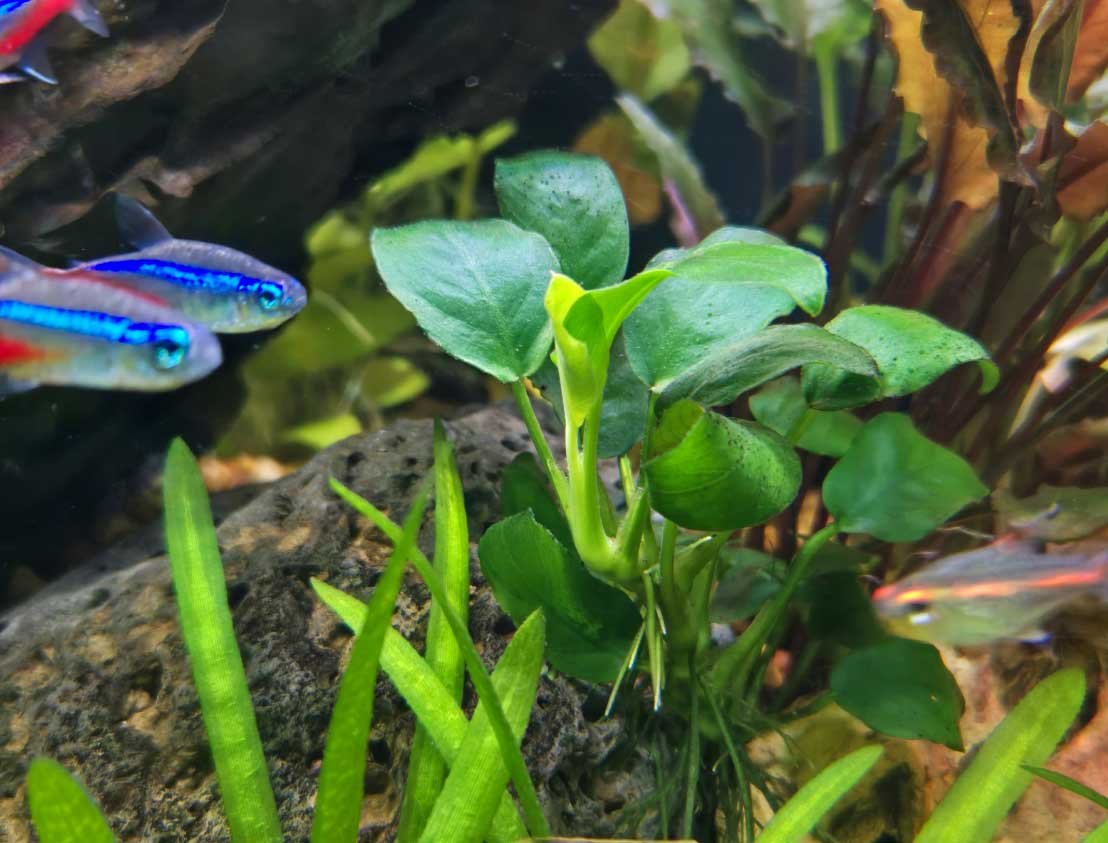
Bucephalandra
- Light: low to medium
- Easy to care for
- Many decorative varieties
- Grows attached to surfaces
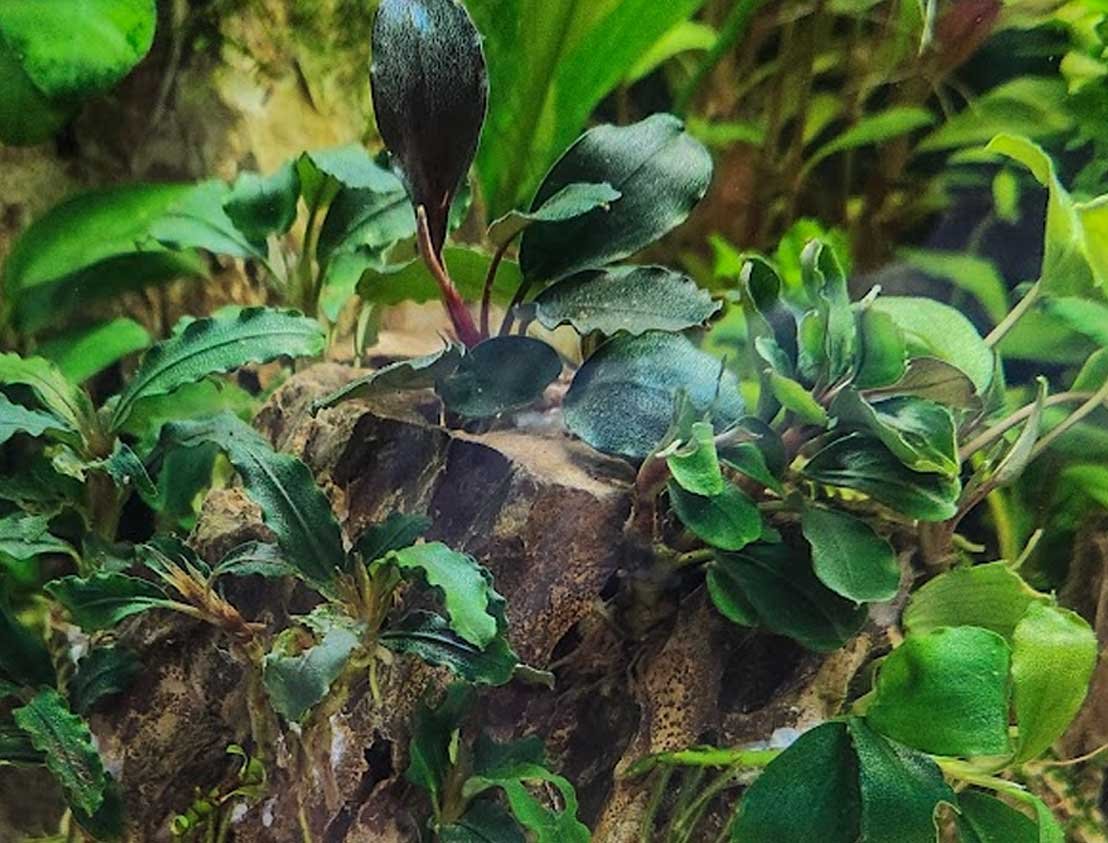
Java Fern
- Light: low
- Doesn’t need substrate
- Great for low-tech aquascapes
- Perfect for tanks with no CO₂
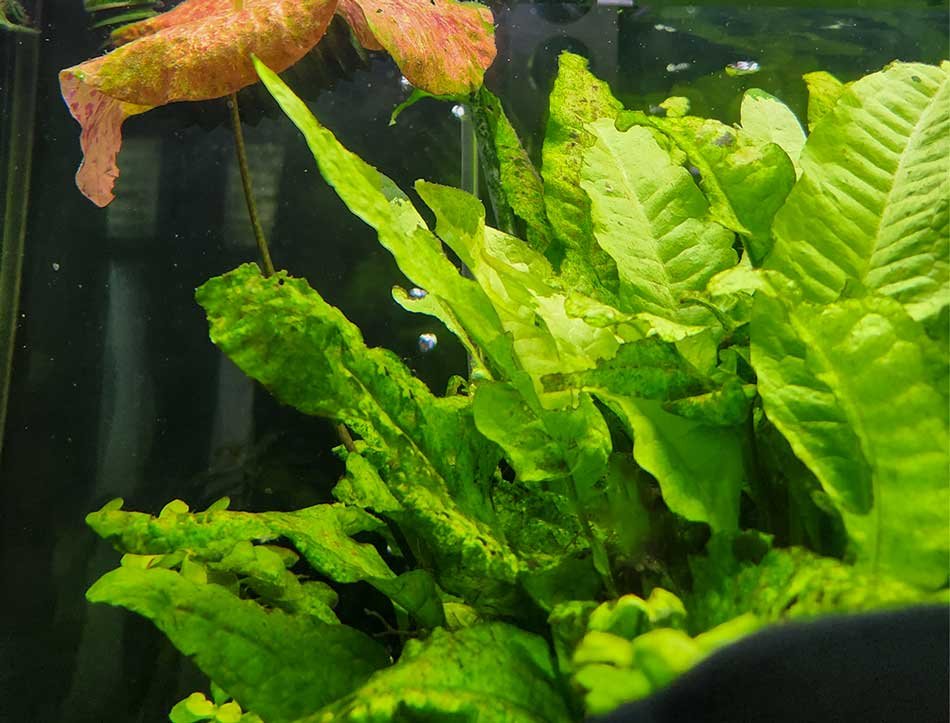
Cryptocoryne
- Light: low to medium
- Root feeder (needs substrate)
- Adapts well to most water parameters
- Variety of leaf shapes and colors
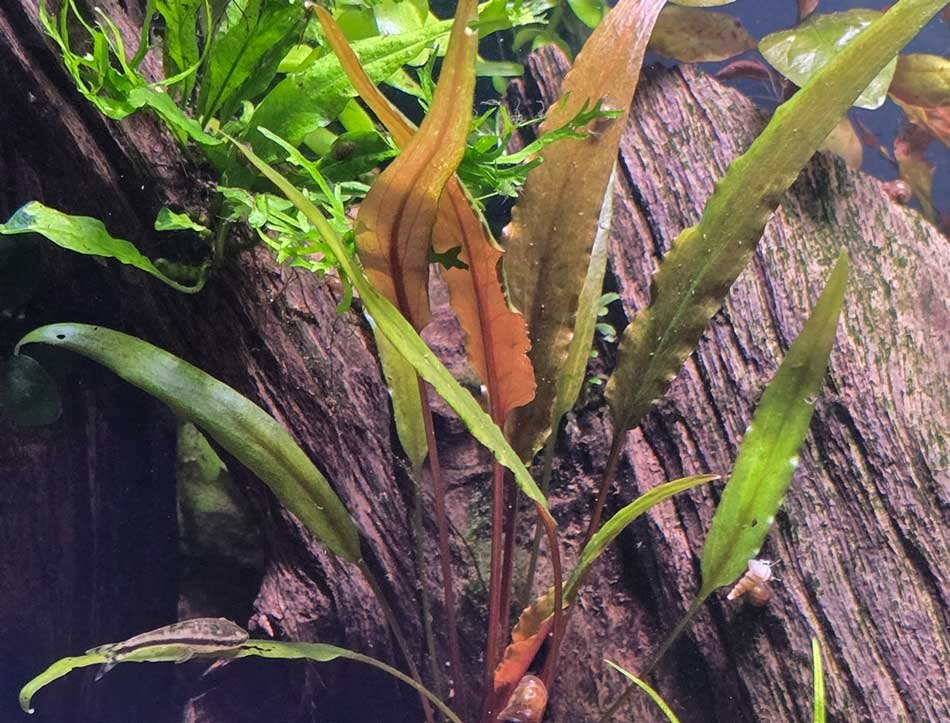
Echinodorus (Amazon Sword)
- Light: medium
- Large, leafy background plant
- Some types can flower above water
- Good for tanks with tall layouts
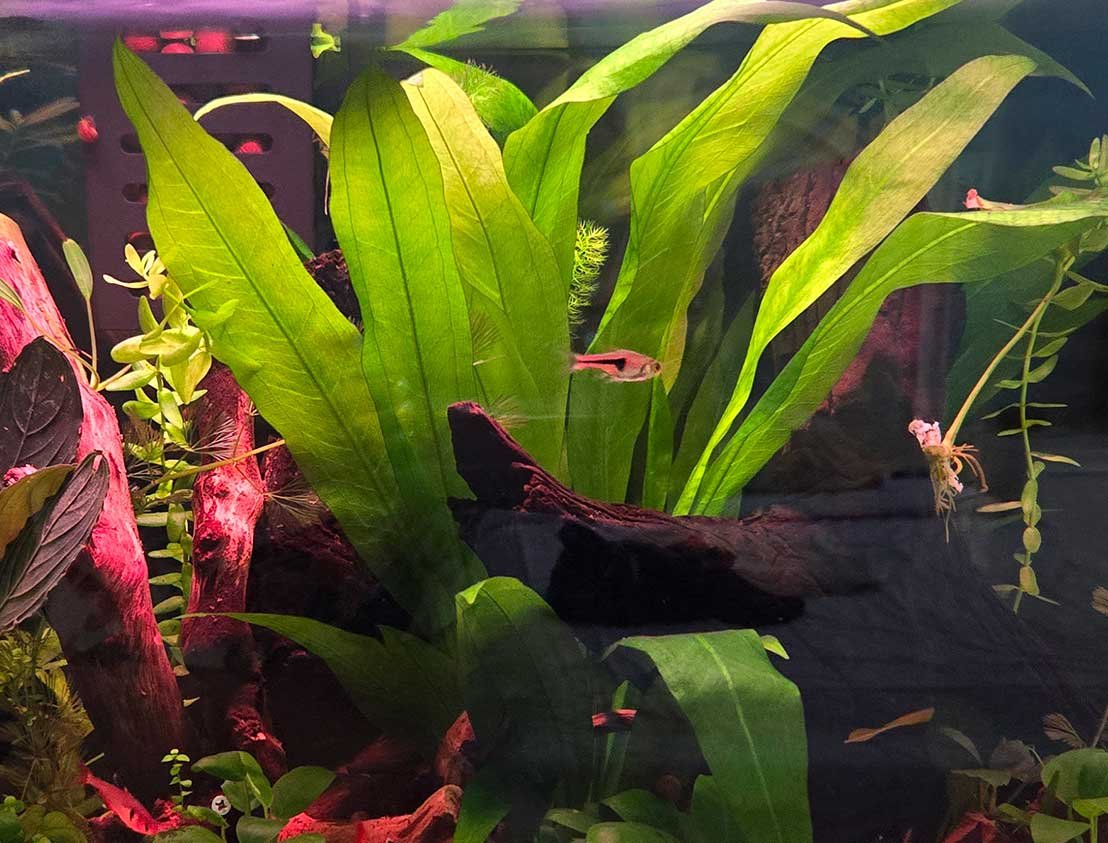
Bacopa
- Light: medium
- Fast grower with small round leaves
- Can be trimmed and replanted easily
- Grows upright, perfect for mid- or background use
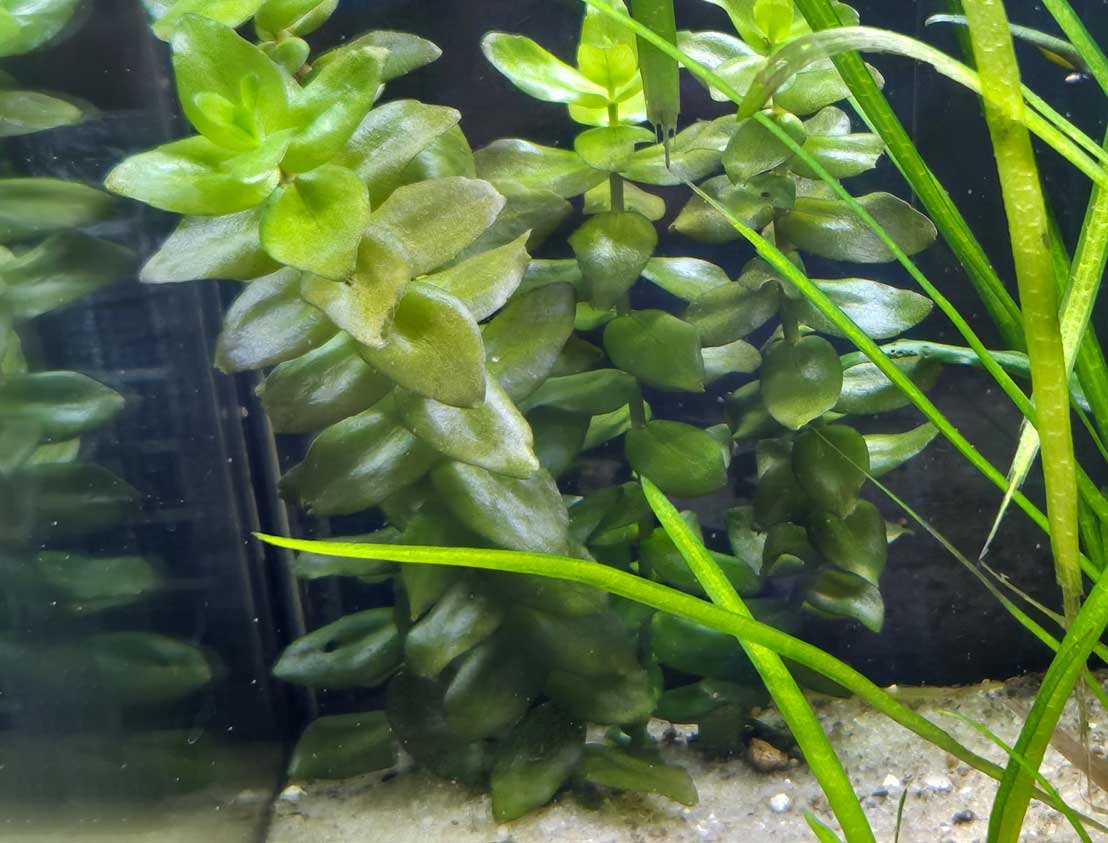
What Equipment Do You Really Need to Grow Plants?
You don’t need a pro setup or expensive tools. Just make sure you have:
- A decent LED light (at least 6–8 hours/day)
- A heater and thermometer (depending on the plants)
- A filter with gentle flow (plants don’t like blasting water)
- Rocks or wood for Anubias and ferns
- Substrate for root feeders like Crypts or Swords
With these basics, you’re ready to go — and can always upgrade later. Remember the plants mentioned above are easy plants for freshwater aquarium.
Do You Need CO2, Fertilizers or Special Substrates?
Not to get started.
All the plants recommended here grow well without injected CO₂ or expensive gear. But if you want to boost growth:
- Add liquid fertilizers 1–2x a week
- Use root tabs for plants like Crypts and Amazon Swords
- Upgrade lighting if plants look pale or weak
Start simple — improve gradually.
How to Plant and Place Your Aquatic Plants
So, how do you plant them correctly? Here’s a quick guide:
- Anubias / Bucephalandra / Java Fern: Never bury the rhizome. Tie them to rocks or wood using string or glue.
- Cryptocoryne / Echinodorus/ Bacopa : Bury roots in substrate, but leave the base (crown) above.
➡️ Place short plants in the front, medium-height ones in the center, and tall plants in the back to create depth.
Tips to Reduce Maintenance With Live Plants
One of the best surprises when I switched to a planted tank was how much less maintenance I had to do.
- Fewer water changes
- Less algae
- Cleaner substrate
- More stable water chemistry
“Maintenance intervals got longer because I had a natural agent consuming fish waste in the tank.”
Exactly. Plants do the dirty work — quietly and efficiently.
Real Experience: My First Planted Aquarium
My first planted tank was a 10-gallon setup with a basic filter and a cheap LED strip. I used Anubias, Java Fern, and a few Crypts.
The fish were livelier, calmer, and the water stayed crystal-clear for weeks.
The best part? Watching the plants slowly grow without any complicated equipment. No CO₂, no fancy fertilizers — just light, patience, and consistency.
And the visual result? Stunning. My aquarium went from a box of water to a living natural scene that transformed my room.
FAQs: Common Questions About Beginner Plants
Final Thoughts: Start Simple, Grow Beautiful
Live plants will transform your aquarium into a vibrant, self-sustaining ecosystem. They not only make your tank more beautiful — they make it healthier and easier to care for.
Starting with easiest freshwater plants: Anubias, Java Fern, or Crypts is one of the best choices you can make. You don’t need fancy gear or years of experience — just curiosity and care.
Trust me: once you see your plants thriving and your fish swimming happily among the leaves… you’ll be hooked for life. 🌿🐠✨
